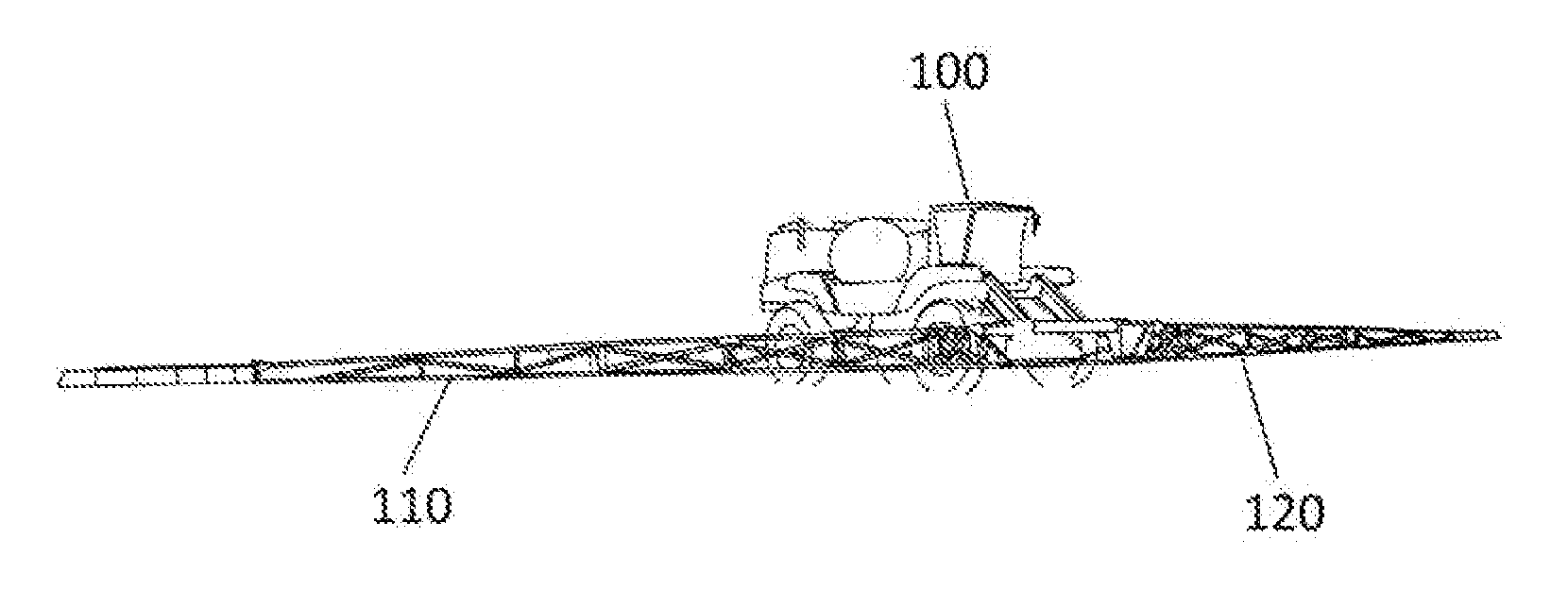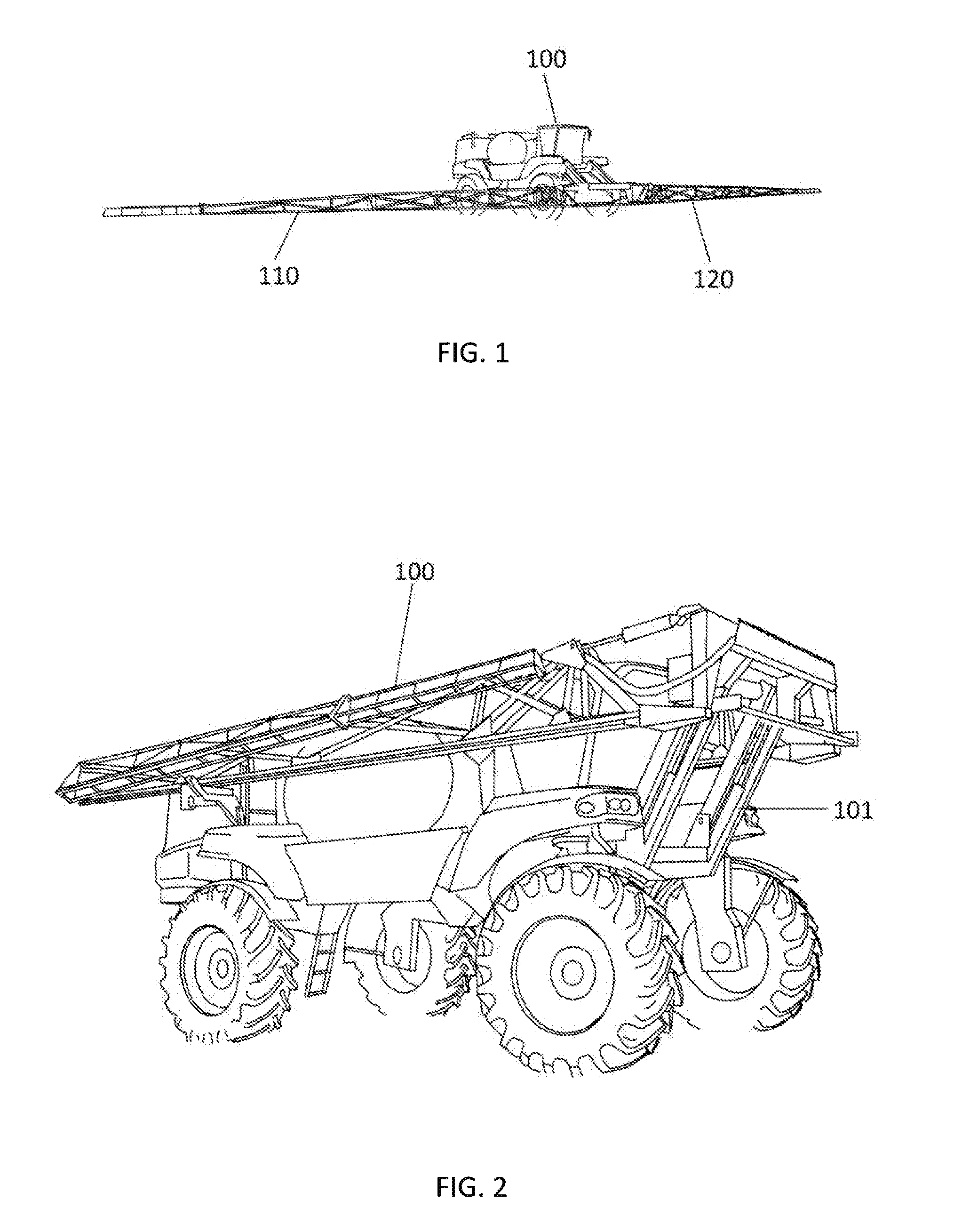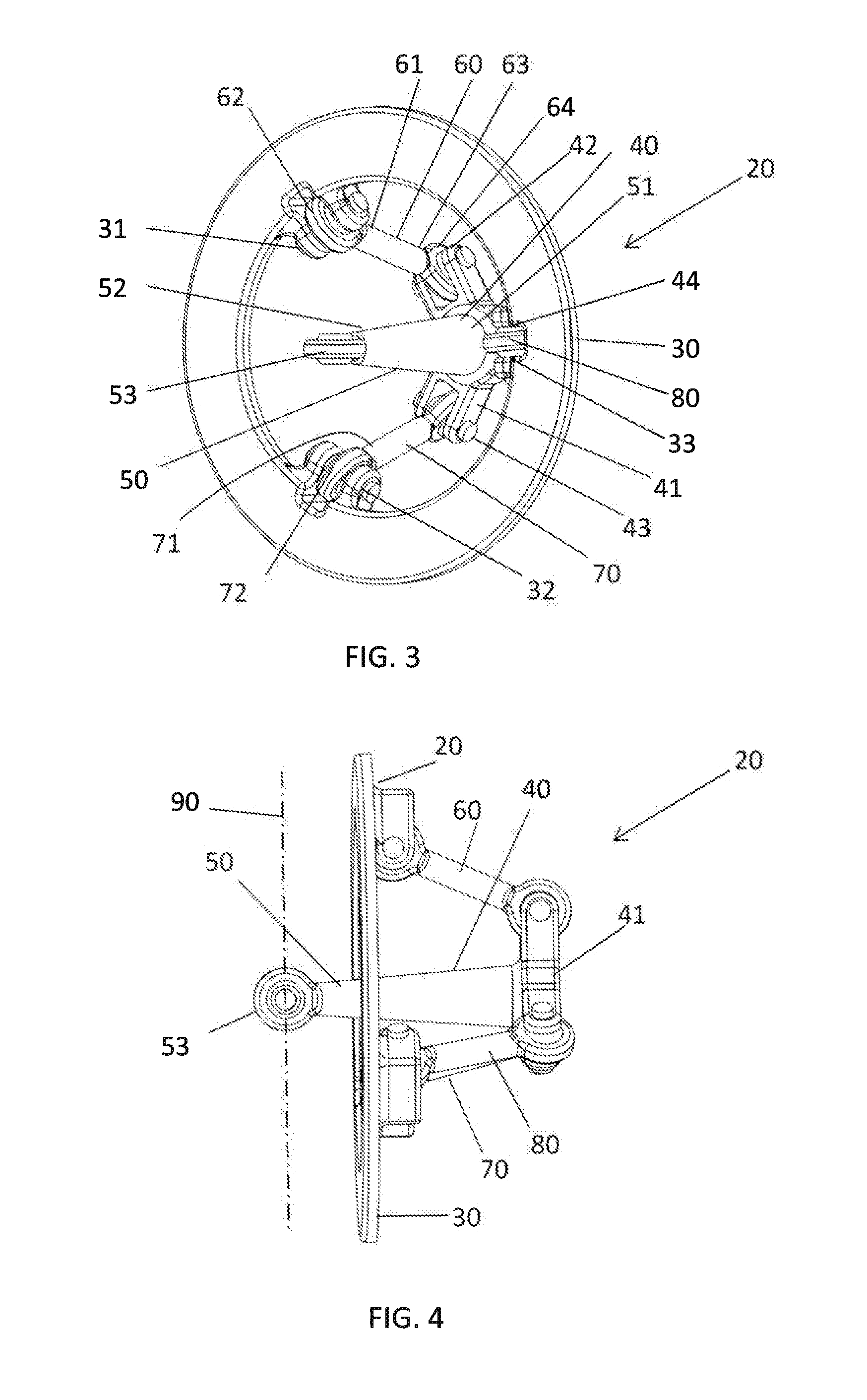Planar Linkage, Methods of Decoupling, Mitigating Shock and Resonance, and Controlling Agricultural Spray Booms Mounted on Ground Vehicles
a technology of plane linkage and spray boom, which is applied in the direction of shock absorbers, rod connections, couplings, etc., can solve the problems of excessive potential destructive forces generated at the spray boom, speed may have to be reduced, active control response is often considered too slow to fully mitigate movement, etc., to maximize vehicle speed, maximize agricultural sprayer utility, and maximize the effect of vehicle speed
- Summary
- Abstract
- Description
- Claims
- Application Information
AI Technical Summary
Benefits of technology
Problems solved by technology
Method used
Image
Examples
Embodiment Construction
[0083]While the invention will be described in connection with one or more preferred embodiments, it will be understood that it is not intended to limit the invention to those embodiments. On the contrary, it is intended to cover all alternatives, modifications and equivalents as may be included within the spirit and scope of the invention as defined by the appended claims.
[0084]Referring now to the invention in more detail, FIGS. 1 and 2 show the booms mounted in position on a vehicle. FIG. 1 shows them as they would be in the deployed in the full-span and part-span operating position when used for spraying crops, while FIG. 2 shows the invention in its folded position as it would be used for driving to and from the fields being sprayed, maneuvering through field entrances gates, along tracks or on roads or highways. Unless otherwise noted, the booms 110 and 120 shown in the various embodiments of the current invention comprise three primary identifiable segments: The primary or in...
PUM
 Login to View More
Login to View More Abstract
Description
Claims
Application Information
 Login to View More
Login to View More - R&D
- Intellectual Property
- Life Sciences
- Materials
- Tech Scout
- Unparalleled Data Quality
- Higher Quality Content
- 60% Fewer Hallucinations
Browse by: Latest US Patents, China's latest patents, Technical Efficacy Thesaurus, Application Domain, Technology Topic, Popular Technical Reports.
© 2025 PatSnap. All rights reserved.Legal|Privacy policy|Modern Slavery Act Transparency Statement|Sitemap|About US| Contact US: help@patsnap.com



